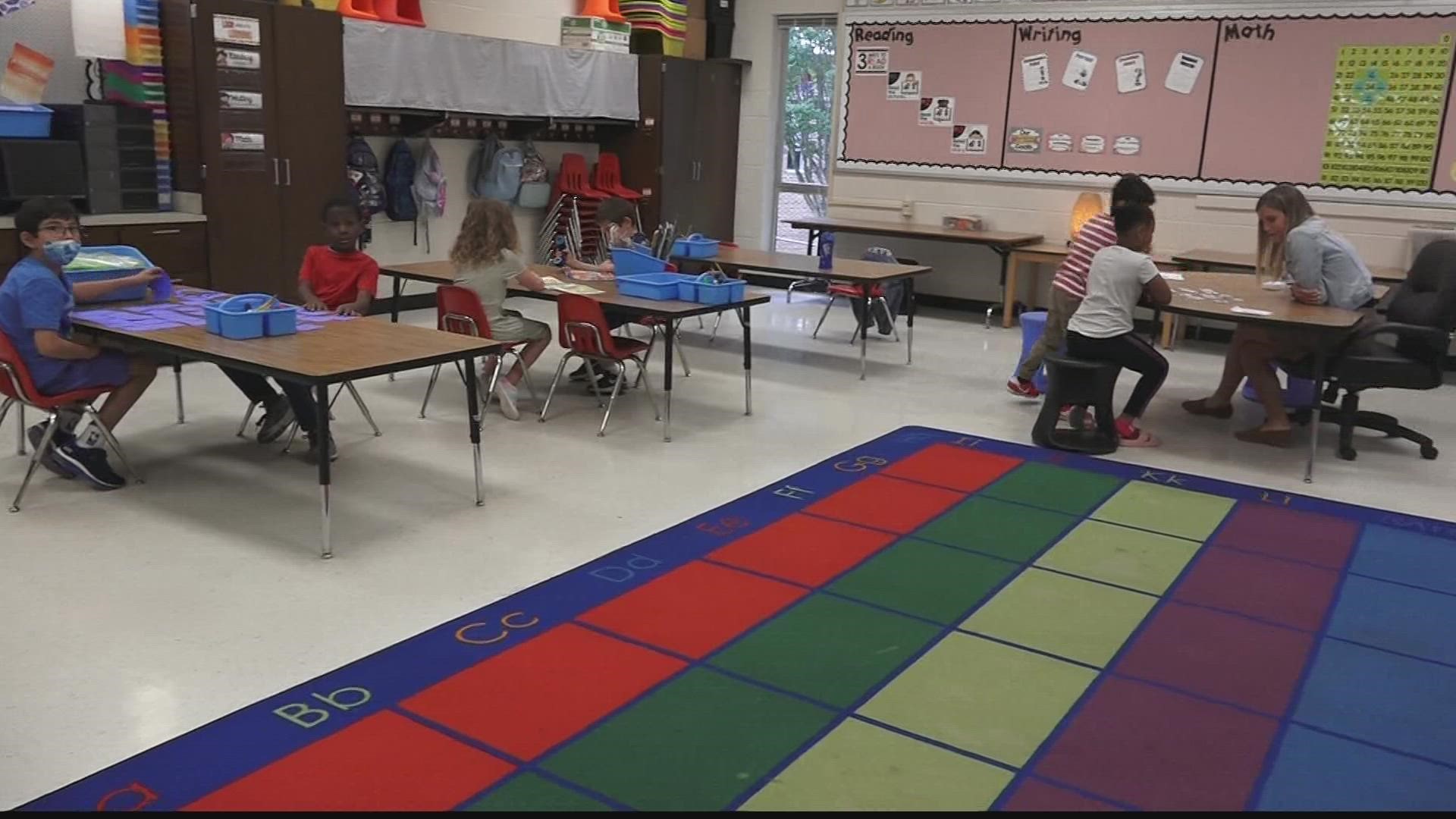ATLANTA — Even though it’s the middle of summer, several classrooms in Fulton County are still in full swing. Fulton County's summer school wraps up this week and more students than ever opted in for the extra learning.
Fulton County Schools said 15,000 students decided to forego the first month of summer break to stay in class. With that, 11,000 students chose the face-to-face option while 4,000 chose virtual summer school. That’s about 17 percent of the total student population in the district.
Cliff Jones, Chief Academic Officer for Fulton County Schools, said while summer learning was open to any student K-12, they targeted third, fifth, and eighth graders based on the milestones test scores.
“Those students who performed below grade level, we actually opted into the program with their parents having the ability to opt out. We had very few parents opt out of this experience,” he said.
Kalaya Lucky just finished the third grade. She’s attending summer school at Parklane Elementary, one of 37 sites across the district.
She said the hardest part of the school year, for her, was math.
“I love reading. Math I have a hard time with, but I just try to do it,” she said.
Many students struggled in math, and it was reflected in the Milestones test scores, according to the district. In response, Fulton County Schools curated a summer curriculum specific to each grade to help close the gap many say the pandemic created.
“Our kids just need more opportunities with those standards because we know they can learn them,” Jones said.
Yarden Paldor is going into the 6th grade next year. She just moved to the United States from Israel and said the small summer classes are a huge advantage.
“I think summer school is very helpful,” she said. “Getting more attention and focusing on what I have done and what I’m doing wrong is very nice for me because in class with 30 kids, we don’t get that attention.”
Mom Katie Garrison admitted she was nervous about sending her daughter Vera Kate, but she said the hands-on lesson plans and everyday recess break have made it fun for her daughter to go.
“Academically she really needed it, so I hoped that socially and emotionally it would be a good thing,” Garrison said. “And, oh my goodness, I was so surprised. That first day, I mean, she just lit up.”
Garrison said her daughter has an enthusiasm she lacked during the regular school year.
“Normally, it’s kind of a challenge to get her to read for pleasure and she’s coming home with books and wanting to read for the first time,” Garrison said. “I also think that it gave her a chance for her confidence to really build. The teachers have been phenomenal. [It] seems like they are excited to be here, which was a surprise to me.”
It took 1,100 staff members and $9 million of federal funds to offer this extra instruction.
“That includes transportation, nutrition workers, custodial [staff]. We have onsite administrators doubling down and giving of their time and their summer to do this,” Jones said. “Kudos to them for working through the summer and really digging in not only with our students but also with each other as they learn.”
The district took advice from parents on how to improve summer learning this year. Based on the feedback, they made three main changes: offering transportation, feeding students breakfast and lunch, and condensing summer school to one six-week block instead of two.
This is the largest turnout they’ve ever had.
“I think it’s going to make my confidence way better because, I mean, getting another month of learning and talking English is very good,” Paldor said.
“I was really nervous and apprehensive about whether to [send Vera Kate to summer school] or not, and I’m so glad that I did,” Garrison said. “She’ll be excited for school to start again.”

